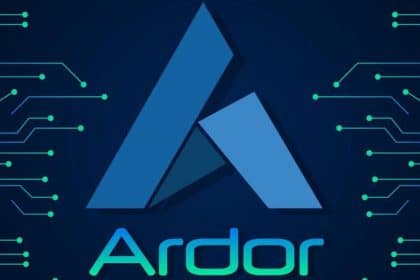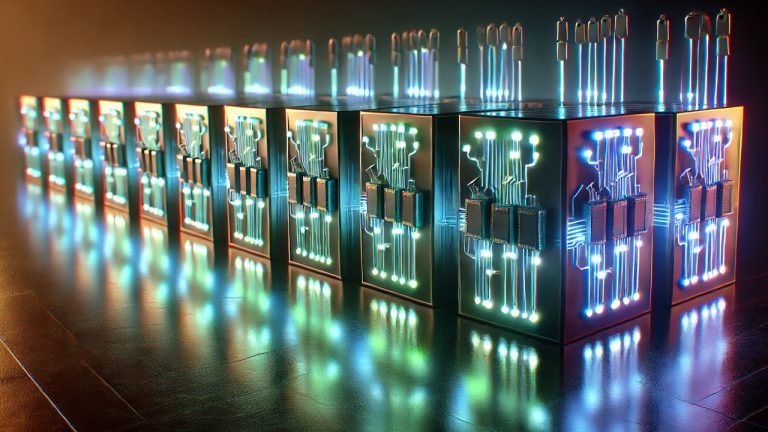The real-world use cases supported by Ardor demonstrate that, nearly four years on from the initial enterprise blockchain hype, blockchain has indeed found the problems it can solve.
As recently as a few years ago, enterprise blockchain was still often the headline news in the cryptocurrency press. However, it was frequently hype-based speculation based on a report that any given company was considering a pilot. Therefore, at that time, the reality couldn’t possibly match the hype, resulting in the accusation that blockchain is a “solution looking for a problem.” As the fanfare died down, headlines turned to price speculation, hacks and misdemeanours, and more recently, DeFi as the hottest new use case.
However, all that initial hype had to be more than just bluster. Many companies and initiatives had spotted the potential for blockchain to solve real-world challenges. But like anything of value, it takes time to build, test, and iterate.
Jelurida, the Swiss software firm behind the Ardor platform, has a team that’s been around in blockchain and systems development long enough to become very familiar with this cycle. Two of Jelurida’s co-founders were involved with the Nxt blockchain, which launched in 2013. Jelurida took over the operation of Nxt, which still runs today, in 2016. However, Ardor has been the firm’s flagship platform since its launch in January 2018.
Ardor – The First Multi-chain Platform
Ardor was the first platform to launch with a multi-chain architecture – a central parent chain with customizable child chains. Jelurida designed Ardor to overcome some key challenges of legacy blockchains, such as the need to hold a native token to transact and bloating due to an ever-expanding ledger.
However, to further enhance Ardor’s usability, Jelurida also developed Ignis, the main child chain on the platform. Ignis offers various ready-to-use applications such as a data cloud, messenger service, and voting system, as well as a coin and asset exchange. Any enterprise or user can use the features of Ignis as-is, or they can create custom functionality on their own dedicated child chain.
All tech innovations aside, what’s impressive about Ardor is the fact that over the three years since it launched, it’s become a go-to platform for projects looking to apply the features of blockchain to solve real-world problems.
Gamification for Sustainability
In 2020, Jelurida was engaged in a collaboration to pilot a new way of recycling heat from waste energy sources using blockchain as a gamification tool. The project, called “HotCity” received a €310,000 grant from the Austrian Federal Ministry for Climate Action, Environment, Energy, Mobility, Innovation, and Technology.
Led by the Austrian Institute of Technology, Jelurida and several other firms developed a proof of concept that allows citizens in a neighborhood of Vienna to submit micro-sources of waste heat. The city already has several so-called “Plus-energy” districts where large waste heat sources are directed back into the energy grid for recycling. HotCity aims to identify smaller sources, and citizens can earn tokens secured by the Ignis child chain in return for their submissions.
Crowdfunding and Transparency for Sustainability
Another project, Treecoin, uses the Ardor platform to crowdfund in its native Switzerland for a reforestation project in Paraguay. The TREE token is being sold in a FINMA-regulated security token sale. All the proceeds will be directed into a sustainable timber business that will reforest up to 60,000 acres of land over the next 23 years while distributing a share of $1.1 billion profits to Treecoin investors.
The initiative seems like a clear win-win. Swiss investors can trace the destination of their investment using the Ardor blockchain. The project team has partnered with a local firm that currently manages 3,000 hectares of reforested land in Paraguay. The nation has significant demand for timber since it is highly dependent on biofuels as there is no natural source of oil or gas. Furthermore, reforestation is a high priority for a country that has seen devastating losses of tree cover over the last four decades.
Gamification for Loyalty and Advertising
Triffic is one of Ardor’s long-time projects, having spent a few years testing and refining its product. However, in September 2020, it successfully launched on mainnet. Triffic aims to make blockchain and cryptocurrencies accessible to anyone via a user-friendly app where people can earn tokens for moving around in their local neighborhoods. In doing so, they can find and collect “beacons” via the in-app map, which offers additional rewards.
Local companies can participate in Triffic to advertise their businesses in the app, offering the ability to target a highly specific audience of those potential customers who are actually in their locale. Furthermore, businesses can offer Triffic users the opportunity to redeem their tokens in-store, creating future loyal customers. All tokens are secured on the Ardor blockchain meaning the Triffic app is completely transparent for users and participating businesses.
Token Economy for an Established Gaming Community
Bridge Champ is one of the latest projects to emerge on Ardor, in this case, spearheaded by Jelurida itself. Bridge is one of the most popular card games globally, with around five million players in the US alone. It’s a highly sociable game, and as such, players have suffered from the lack of social contact forced by the Covid-19 distancing requirements. Unfortunately, online play simply isn’t up to scratch due to the market having little competition between just a few online bridge gameplay operators.
To plug this gap, Jelurida is developing Bridge Champ, the first platform of its kind dedicated to using blockchain for online bridge gaming. Based on Ignis, Bridge Champ will operate an in-game economy for bridge competition registration and organization. Game results will be secured on Ignis, and gameplay will be provably fair, eliminating the possibility of fraud or cheating.
The real-world use cases supported by Ardor demonstrate that, nearly four years on from the initial enterprise blockchain hype, blockchain has indeed found the problems it can solve. Over the coming years, and as more projects unveil the results of their innovation and building work, it seems likely that blockchain will continue to yield positive results.
Having obtained a diploma in Intercultural Communication, Julia continued her studies taking a Master’s degree in Economics and Management. Becoming captured by innovative technologies, Julia turned passionate about exploring emerging techs believing in their ability to transform all spheres of our life.




